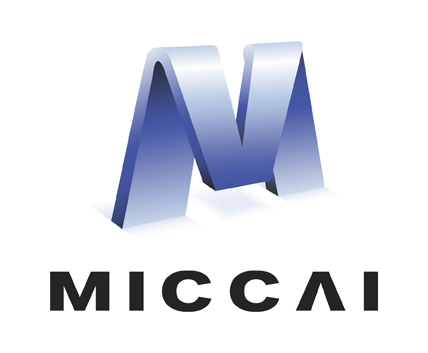Abstract
Reducing the requirement for densely annotated masks in medical image segmentation is important due to cost constraints. In this paper, we consider the problem of inferring pixel-level predictions of brain lesions by only using image-level labels for training. By leveraging recent advances in generative diffusion probabilistic models (DPM), we synthesize counterfactuals of “How would a patient appear if X pathology was not present?”. The difference image between the observed patient state and the healthy counterfactual can be used for inferring the location of pathology. We generate counterfactuals that correspond to the minimal change of the input such that it is transformed to healthy domain. This requires training with healthy and unhealthy data in DPMs. We improve on previous counterfactual DPMs by manipulating the generation process with implicit guidance along with attention conditioning instead of using classifiers (Code is available at https://github.com/vios-s/Diff-SCM).
Access this chapter
Tax calculation will be finalised at checkout
Purchases are for personal use only
Similar content being viewed by others
Notes
- 1.
Such as variational autoencoders (VAEs), normalizing flows (NFs) or generative adversarial networks (GANs).
- 2.
If the input is healthy, applying an intervention should not modify it.
- 3.
- 4.
High absolute values of the neural network’s input can result in unstable behaviour.
- 5.
References
Bakas, S., et al.: Identifying the best machine learning algorithms for brain tumor segmentation, progression assessment, and overall survival prediction in the BraTS challenge. arXiv preprint arXiv:1811.02629 (2018)
Baur, C., Denner, S., Wiestler, B., Navab, N., Albarqouni, S.: Autoencoders for unsupervised anomaly segmentation in brain MR images: a comparative study. Med. Image Anal. 69, 101952 (2021)
Dhariwal, P., Nichol, A.Q.: Diffusion models beat GANs on image synthesis. In: Beygelzimer, A., Dauphin, Y., Liang, P., Vaughan, J.W. (eds.) Advances in Neural Information Processing Systems (2021)
Ho, J., Jain, A., Abbeel, P.: Denoising diffusion probabilistic models. In: Advances on Neural Information Processing Systems (2020)
Ho, J., Salimans, T.: Classifier-free diffusion guidance. In: NeurIPS 2021 Workshop on Deep Generative Models and Downstream Applications (2021)
Hyvärinen, A.: Estimation of non-normalized statistical models by score matching. J. Mach. Learn. Res. 6, 695–709 (2005)
Kascenas, A., Pugeault, N., O’Neil, A.Q.: Denoising autoencoders for unsupervised anomaly detection in brain MRI. In: Medical Imaging with Deep Learning (2022)
Meissen, F., Kaissis, G., Rueckert, D.: Challenging current semi-supervised anomaly segmentation methods for brain MRI. In: Crimi, A., Bakas, S. (eds.) BrainLes 2021. LNCS, vol. 12962, pp. 450–462. Springer, Cham (2021). https://doi.org/10.1007/978-3-031-08999-2_5
Nichol, A., et al.: Glide: towards photorealistic image generation and editing with text-guided diffusion models. arXiv preprint arXiv:2112.10741 (2021)
Pawlowski, N., Castro, D.C., Glocker, B.: Deep structural causal models for tractable counterfactual inference. In: Advances in Neural Information Processing Systems (2020)
Pinaya, W.H., et al.: Fast unsupervised brain anomaly detection and segmentation with diffusion models. arXiv preprint arXiv:2206.03461 (2022)
Ramesh, A., Dhariwal, P., Nichol, A., Chu, C., Chen, M.: Hierarchical text-conditional image generation with clip latents. arXiv preprint arXiv:2204.06125 (2022)
Rombach, R., Blattmann, A., Lorenz, D., Esser, P., Ommer, B.: High-resolution image synthesis with latent diffusion models. In: Proceedings of the IEEE Conference on Computer Vision and Pattern Recognition (CVPR) (2022)
Saharia, C., et al.: Photorealistic text-to-image diffusion models with deep language understanding. arXiv preprint arXiv:2205.11487 (2022)
Sanchez, P., Tsaftaris, S.A.: Diffusion causal models for counterfactual estimation. In: First Conference on Causal Learning and Reasoning (2022)
Schlegl, T., Seeböck, P., Waldstein, S.M., Langs, G., Schmidt-Erfurth, U.: f-AnoGAN: fast unsupervised anomaly detection with generative adversarial networks. Med. Image Anal. 54, 30–44 (2019)
Song, J., Meng, C., Ermon, S.: Denoising diffusion implicit models. In: Proceedings of International Conference on Learning Representations (2021)
Wolleb, J., Bieder, F., Sandkhler, R., Cattin, P.C.: Diffusion models for medical anomaly detection. arXiv preprint arXiv:2203.04306 (2022)
Xia, T., Chartsias, A., Tsaftaris, S.A.: Pseudo-healthy synthesis with pathology disentanglement and adversarial learning. Med. Image Anal. 64, 101719 (2020)
You, S., Tezcan, K.C., Chen, X., Konukoglu, E.: Unsupervised lesion detection via image restoration with a normative prior. In: International Conference on Medical Imaging with Deep Learning, pp. 540–556. PMLR (2019)
Zhou, L., Deng, W., Wu, X.: Unsupervised anomaly localization using VAE and Beta-VAE. arXiv preprint arXiv:2005.10686 (2020)
Zimmerer, D., Isensee, F., Petersen, J., Kohl, S., Maier-Hein, K.: Unsupervised anomaly localization using variational auto-encoders. In: Shen, D., et al. (eds.) MICCAI 2019. LNCS, vol. 11767, pp. 289–297. Springer, Cham (2019). https://doi.org/10.1007/978-3-030-32251-9_32
Zimmerer, D., Kohl, S.A., Petersen, J., Isensee, F., Maier-Hein, K.H.: Context-encoding variational autoencoder for unsupervised anomaly detection. arXiv preprint arXiv:1812.05941 (2018)
Acknowledgements
This work was supported by the University of Edinburgh, the Royal Academy of Engineering and Canon Medical Research Europe via PhD studentships of Pedro Sanchez and Xiao Liu (grant RCSRF1819\(\backslash \)825). This work was partially supported by the Alan Turing Institute under the EPSRC grant EP N510129\(\backslash \)1.
Author information
Authors and Affiliations
Corresponding author
Editor information
Editors and Affiliations
A Algorithm
A Algorithm

Rights and permissions
Copyright information
© 2022 The Author(s), under exclusive license to Springer Nature Switzerland AG
About this paper
Cite this paper
Sanchez, P., Kascenas, A., Liu, X., O’Neil, A.Q., Tsaftaris, S.A. (2022). What is Healthy? Generative Counterfactual Diffusion for Lesion Localization. In: Mukhopadhyay, A., Oksuz, I., Engelhardt, S., Zhu, D., Yuan, Y. (eds) Deep Generative Models. DGM4MICCAI 2022. Lecture Notes in Computer Science, vol 13609. Springer, Cham. https://doi.org/10.1007/978-3-031-18576-2_4
Download citation
DOI: https://doi.org/10.1007/978-3-031-18576-2_4
Published:
Publisher Name: Springer, Cham
Print ISBN: 978-3-031-18575-5
Online ISBN: 978-3-031-18576-2
eBook Packages: Computer ScienceComputer Science (R0)





